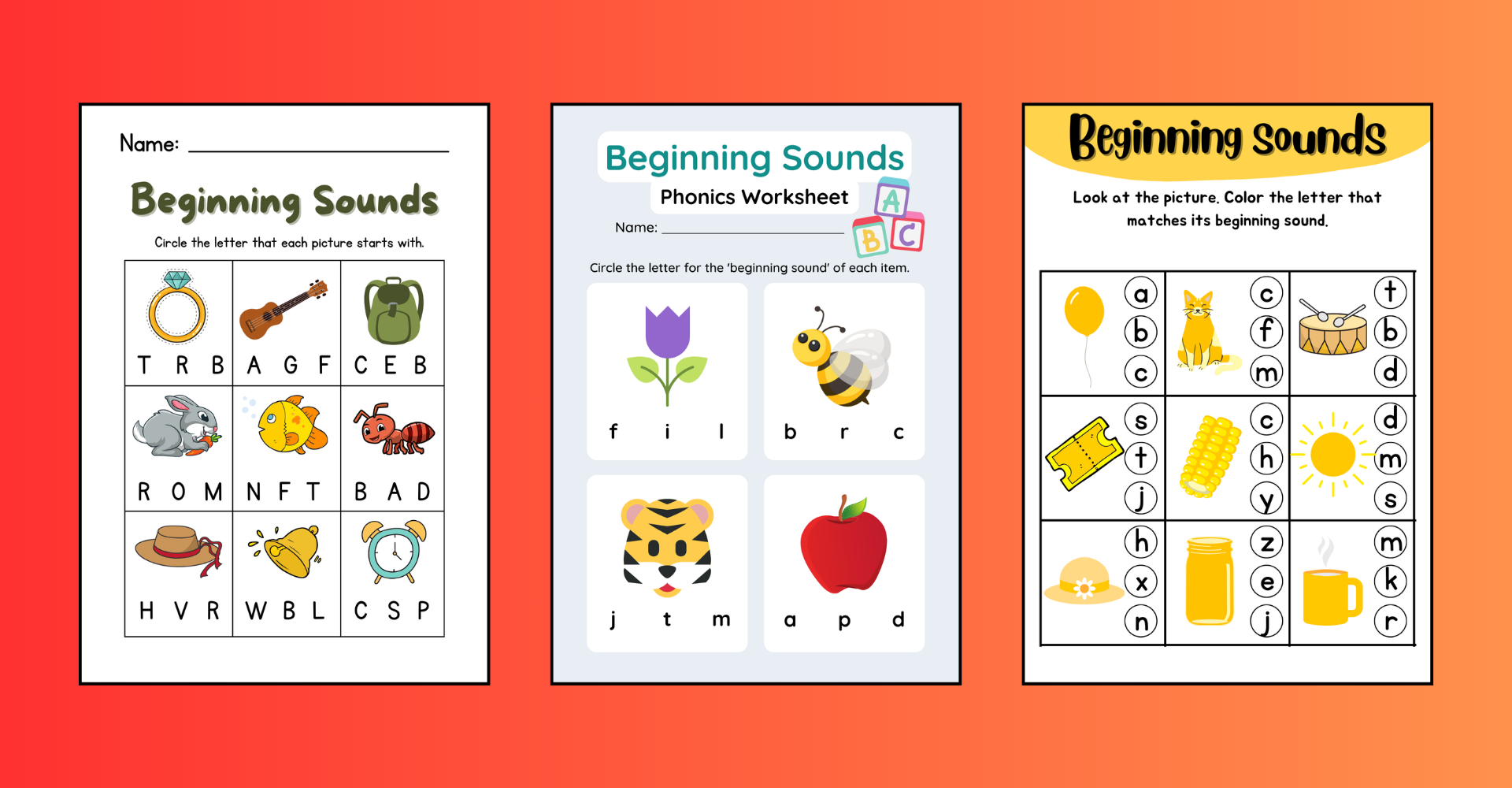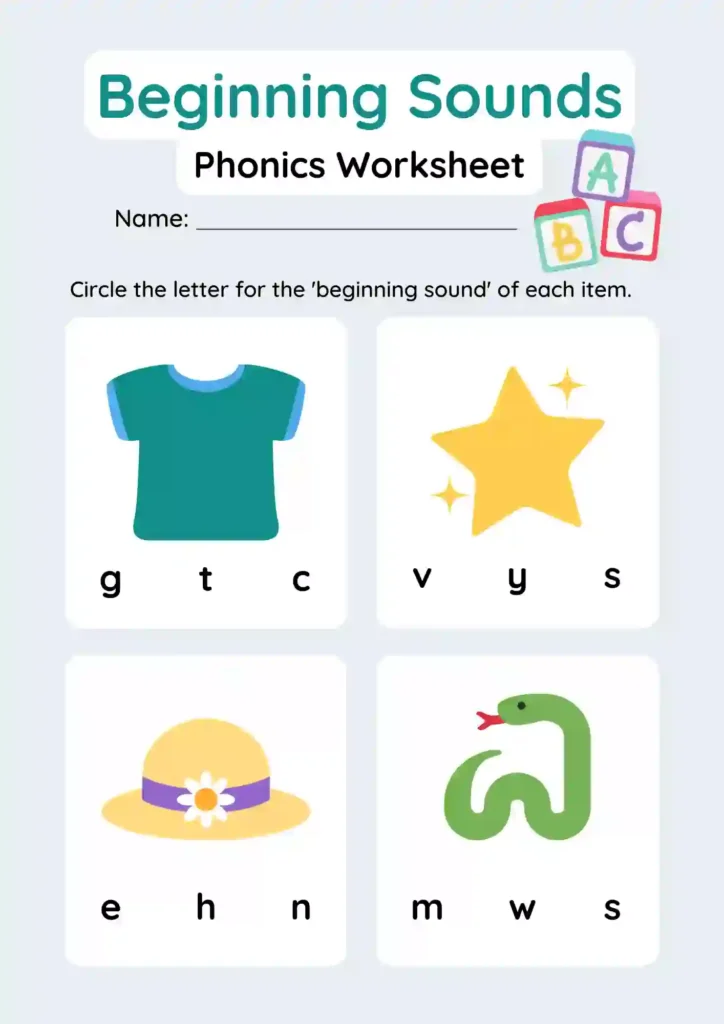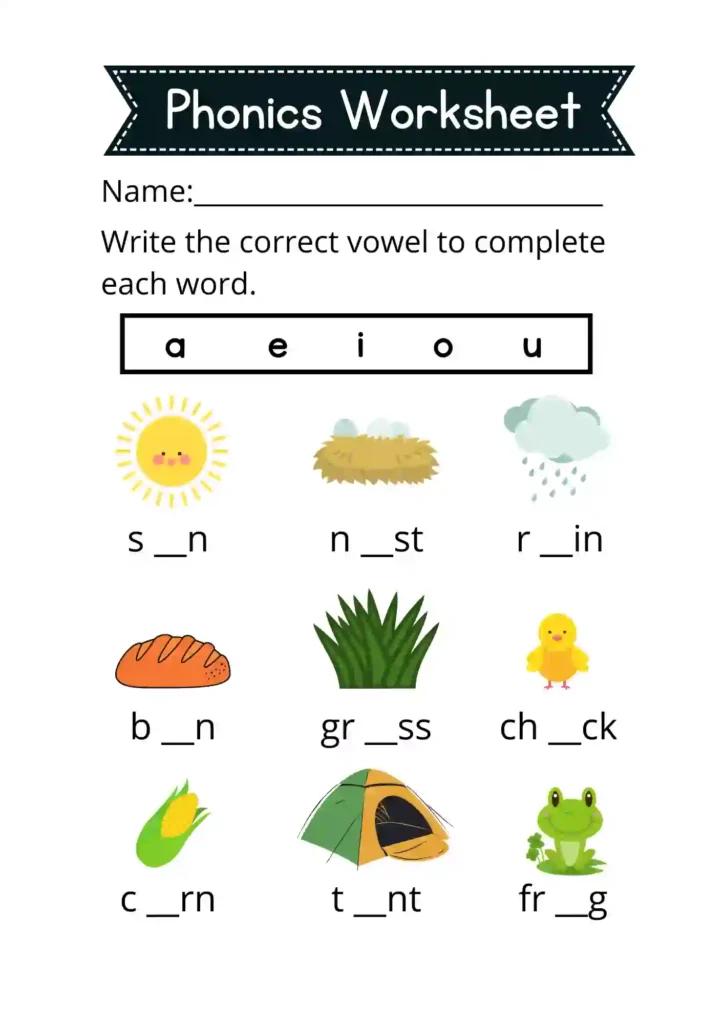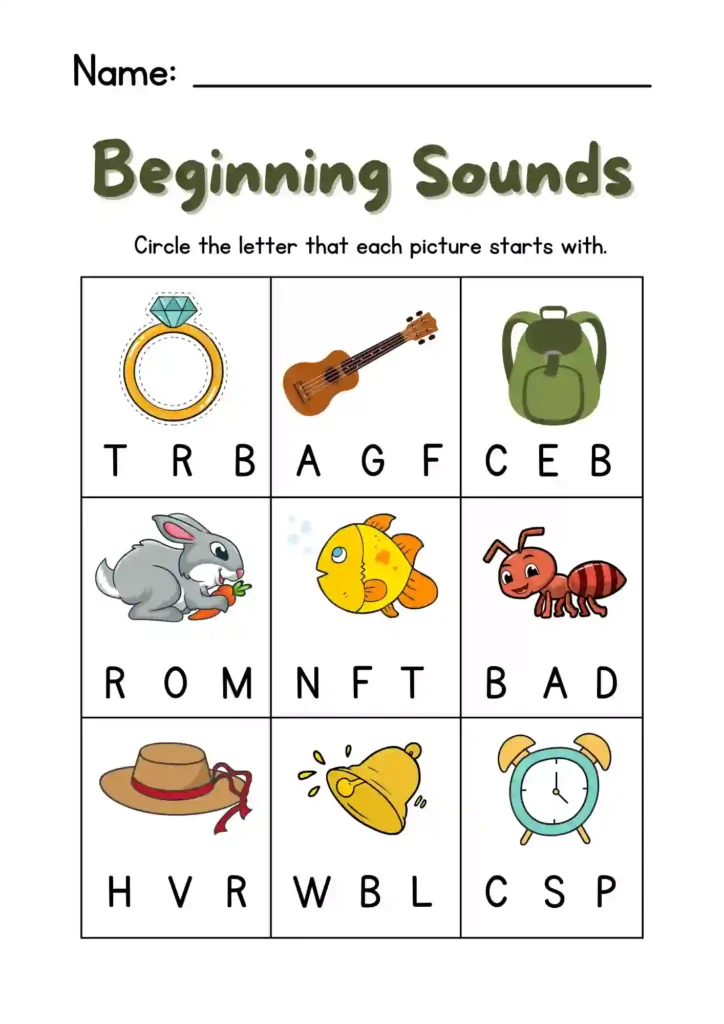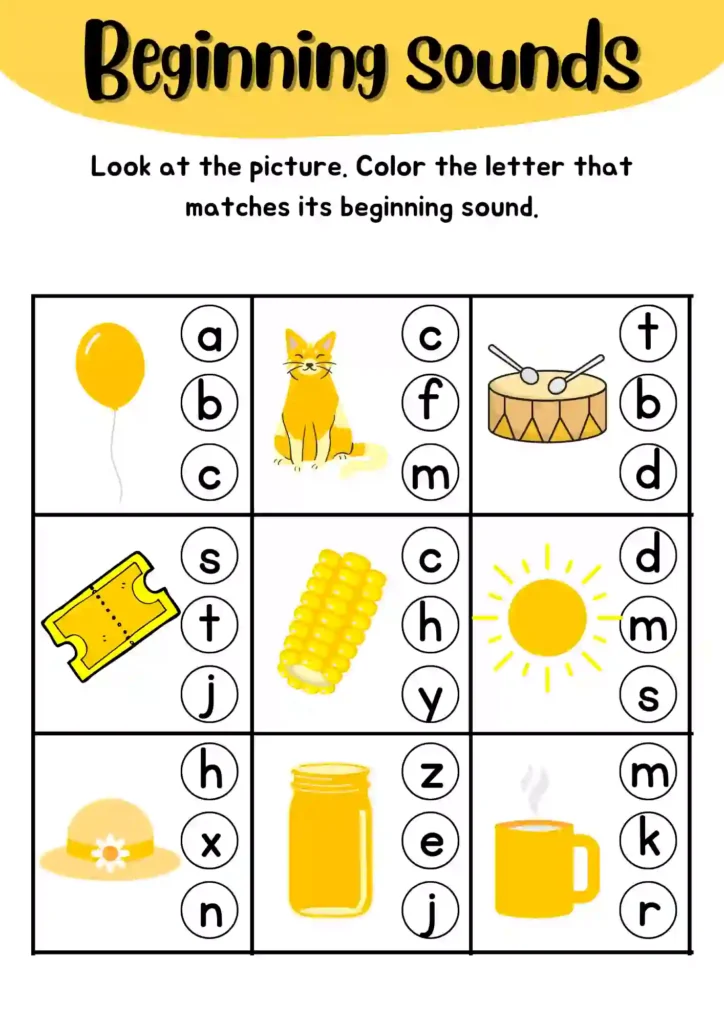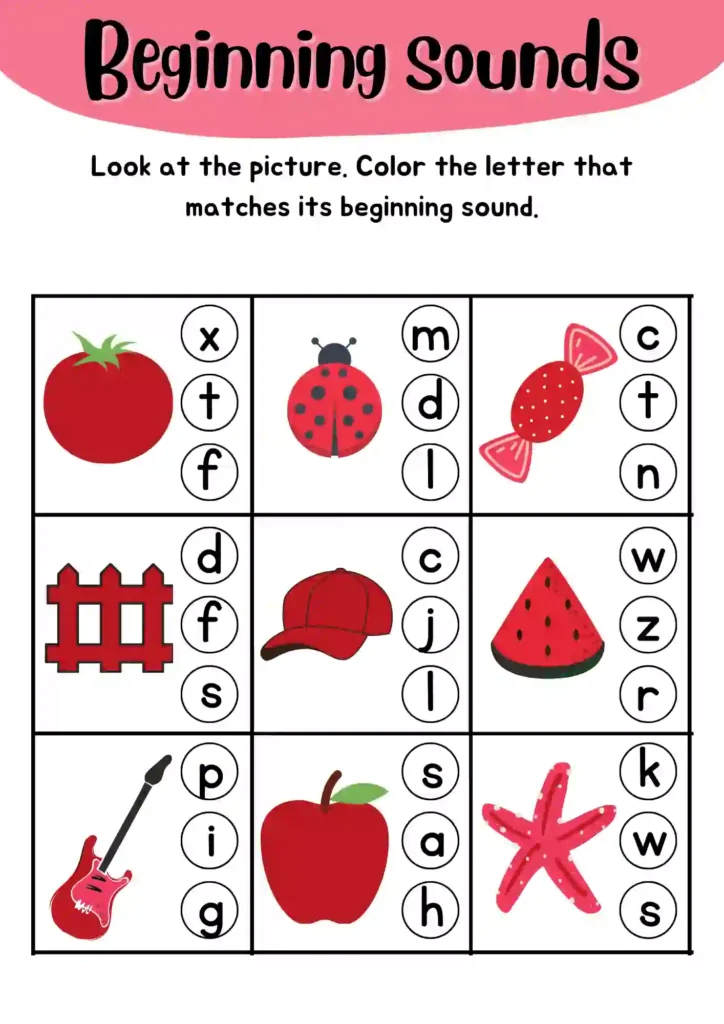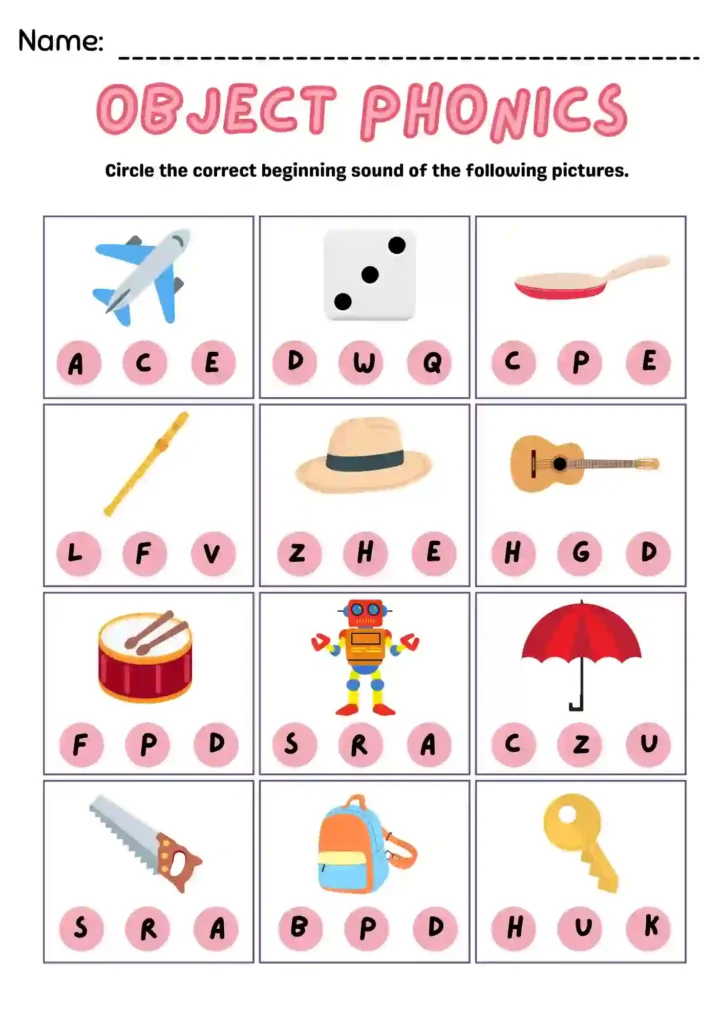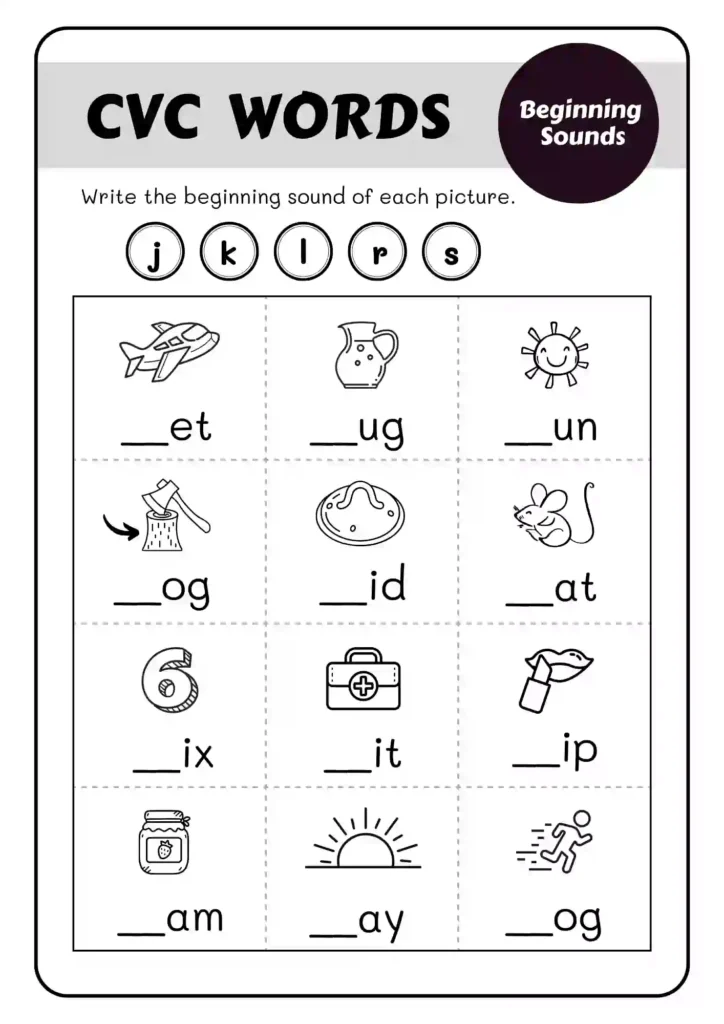Download for free our “Beginner Phonics Worksheets for Kindergarten.” Phonics is an important part of learning for young children. It helps them develop the basic skills they need for reading and writing. Our phonics worksheets are specially made to assist young learners in recognizing and identifying the first sounds in words. This is a fun and interactive way for them to improve their phonemic awareness, which is the ability to hear and work with sounds in spoken language. These worksheets are just right for kindergarten students. They offer a structured approach that is also engaging, making it easier and more enjoyable for kids to learn the basics of phonics. We hope you find these resources helpful as you support your child’s learning journey!
Beginner Phonics Worksheets For Kindergarten Details:
| Feature | Details |
|---|---|
| Format | Downloadable PDF |
| Number of Pages | 8 |
| Content | Beginner Phonics Worksheets For Kindergarten. Interactive Phonics Worksheets |
| Illustrations | Yes, playful and age-appropriate |
| Suitable For | Nursery, Lkg & Ukg |
| Printable? | Yes |
Learning Objectives:
- Identify Beginning Sounds: Students will learn to recognize the first letter of different pictures. They will circle the beginning letter, which will help them understand how sounds start words. This activity encourages them to listen carefully to sounds and improves their auditory skills.
- Enhance Phonemic Awareness: These activities will help children tell the difference between various sounds. This skill is very important because it lays the foundation for reading well. By practicing with different phonemes, students will become more adept at hearing and using sounds in their everyday speech.
- Build Vocabulary: Students will grow their vocabulary by connecting letters to pictures and words. This will help them learn new words and understand their meanings better. Additionally, introducing new vocabulary in context will make it easier for them to remember and use these words in conversations.
- Boost Confidence: Through lots of practice and positive feedback, children will feel more confident in their phonics skills. This encouragement will make them more excited about learning to read! As they see their progress, their self-esteem will grow, motivating them to tackle new challenges.
- Encourage Critical Thinking: These worksheets will prompt students to think critically about the sounds they hear and the letters they see. By asking questions and encouraging them to make connections, we help them develop problem-solving skills that are essential for learning.
- A Love for Learning: By making learning fun and interactive, these worksheets will help students develop a positive attitude towards education. Engaging activities will spark their curiosity and inspire them to explore more about letters, sounds, and words.
Who is this for?: These worksheets are specifically designed for kindergarten students who are beginning their phonics journey. They are suitable for use in both classroom settings and homeschooling environments, providing a versatile tool for educators and parents alike.
Materials Needed: To get started with these beginner phonics worksheets, you’ll need:
- Printed Copies of the Worksheets: Access the downloadable PDF versions of the worksheets.
- Crayons or Colored Pencils: Provide a selection of crayons or colored pencils for children to use when circling the correct letters.
How to Use:
- Introduce the Activity: Start by talking to the children about what beginning sounds are. Explain that the beginning sound is the first sound we hear in a word. You can show them some examples, like the word “cat.” Point out that the first sound in “cat” is the letter “c.” This will help them understand the connection between letters and sounds.
- Demonstrate: Choose one of the phonics worksheets to show the kids. Go through it together, pointing to each picture. Say the name of each picture out loud, making sure to emphasize the beginning sound. For example, if you see a picture of a dog, say “dog” and stress the “d” sound. Then, show them how to circle the correct letter that matches that sound.
- Guided Practice: Now, let’s work on a few pictures together as a group. Encourage the children to help you identify the beginning sounds. As they share their thoughts, provide support and guidance to help them feel confident in their answers.
- Independent Practice: After practicing together, it’s time for the children to try it on their own. Encourage them to complete the rest of the pictures by circling the correct beginning letters. Remind them to think about the sounds they hear at the start of each word.
- Review and Discuss: Once everyone has finished the worksheet, gather together to review the answers. Go through each picture and discuss what they chose. If there are any mistakes, gently correct them and reinforce the right beginning sounds. This will help solidify their understanding and boost their confidence.
Tips:
- Use Visual Aids: Try using flashcards that have both pictures and letters on them. This can help students see and understand the beginning sounds of words more clearly. For example, show a card with a picture of an apple and the letter “A” to support the sound.
- Include Hands-On Activities: Get students involved with hands-on activities! You can use letter blocks or magnetic letters that they can touch and move around. This approach is especially helpful for students who learn best by doing things with their hands.
- Provide Auditory Cues: Make sure to say words out loud, emphasizing the beginning sounds. For instance, when teaching the word “cat,” you can say it slowly and clearly, stressing the “c” sound at the start. This helps auditory learners pick up on sounds more easily.
- Encourage Pair Work: Pair students together for activities where they can work as a team. When they collaborate, they can help each other identify beginning sounds. This not only makes learning more fun but also builds their confidence as they share ideas and support one another.
Additional Activities:
- Phonics Games: Have fun playing phonics games! You can play “I Spy,” where you look for things that start with a certain sound, or “Sound Bingo,” where you listen for sounds and mark them on your bingo card. These games make learning about the sounds that letters make exciting and enjoyable.
- Storytime: Reading stories together is a great way to learn! Choose books that use alliteration, which means the same beginning sounds are repeated, like “Silly Sally.” While you read, ask the children to listen closely and point out the beginning sounds they hear. This helps them practice identifying sounds in a fun way.
- Craft Projects: Get creative with some craft projects! You can make alphabet collages by cutting out pictures from magazines that start with different letters. Another fun idea is to go on a sound scavenger hunt, where you find objects around the house or outside that start with specific sounds. These hands-on activities help reinforce what they learn about sounds while having a great time!
- Singing and Rhyming: Singing songs and reciting rhymes is a fantastic way to learn about sounds and letters. Choose songs and rhymes that focus on specific sounds, like “The Itsy Bitsy Spider” for the “s” sound. Encourage the children to sing along and make up their own verses. This helps them remember sounds and have fun at the same time.
Download the PDF File Here:
Click To Download Beginner Phonics Worksheets for Kindergarten PDF
How to Print:
- Get the PDF: Start by clicking the link to download the PDF files of the worksheets.
- Set up Printing: Make sure your printer is all set up. You can adjust the settings like paper size, whether it’s portrait or landscape, and how clear you want the print to be.
- Check Before You Print: Take a print preview. To make sure everything looks just right before you hit print.
- Print: Once you’re happy with how it looks, go ahead and hit that print button.
Tips for Parents and Educators:
- 1. Use Positive Reinforcement: Make sure to celebrate your child’s efforts and achievements! When you praise them for their hard work, it helps build their confidence and motivates them to keep trying. A simple “Great job!” or “I’m so proud of you!” can make a big difference.
- 2. Encourage Active Participation: Get your child involved in discussions and activities about phonics. Ask them questions and let them share their thoughts. The more they participate, the more they will learn and enjoy the process!
- 3. Practice Consistently: Try to include phonics practice in your daily routine. This could be as simple as reading together every night or playing phonics games during the day. Regular practice helps strengthen what they learn and makes it easier for them to remember.
- 4. Collaborative Learning: Create a learning environment where children can work together. Encourage them to share their experiences and help each other out. When they collaborate, they can learn from one another and build friendships along the way.
Common Mistakes and Solutions:
- Confusing Similar Sounds: Sometimes, children mix up words that sound alike, especially those that start with similar sounds. To help them, you can:
- Give Clear Examples: Use words like “bat” and “pat” to show the difference.
- Practice Together: Play games where you say words out loud, and ask the child to repeat them. This will help them hear and understand the differences better.
- Lack of Engagement: If a child seems bored or loses interest in learning, it’s important to make the activities fun. You can:
- Use Engaging Activities: Try using songs, stories, or interactive games that involve phonics.
- Make Learning Playful: Incorporate toys or art projects that relate to the sounds they are learning. This way, they will enjoy the process more.
- Difficulty with Letter Recognition: Some children may find it hard to recognize letters. To support them, you can:
- Incorporate Fun Practice: Sing alphabet songs together to make letter learning enjoyable.
- Use Flashcards: Show them flashcards with letters and pictures to help them connect letters with sounds.
- Include Tracing Activities: Let them trace letters with their fingers or crayons to reinforce their learning through hands-on activities.
Leave a Comment: We value your feedback and experiences! Share your thoughts and suggestions in the comments section below. Your insights help us create better resources and support young learners on their educational journey.
How to Craft Your Own Beginner Phonics Worksheets for Kindergarten:
Creating your own phonics worksheets can be a rewarding and personalized way to support your child’s learning. Here’s a step-by-step guide to crafting your own beginner phonics worksheets:
- Choose the Sounds You Want to Teach: Start by deciding which sounds you want your child to learn. It’s best to begin with common letters, like the consonants “b,” “c,” and “m,” and vowels like “a” and “e.” These sounds are often found in the early books that children read.
- Find or Draw Pictures: Next, look for pictures that show words starting with the sounds you chose. You can also draw your own pictures! Make sure the images are clear and easy for young children to recognize. For example, if you’re focusing on the letter “b,” you could use a picture of a “ball” or a “bat.”
- Design Your Worksheet: Now it’s time to put everything together! Create a worksheet that has a simple layout. You might want to use a grid or a list. Place the pictures on one side of the page and write some letters on the other side. Ask your child to circle the letter that matches the beginning sound of each picture.
- Write Clear Instructions: At the top of your worksheet, write easy-to-understand instructions. Explain what your child needs to do, like “Look at the pictures and circle the letter that starts the word.”
- Make It Colorful and Fun: Add some colors and fun designs to your worksheet to make it more exciting for your child. Bright visuals can help keep their interest and make learning enjoyable!
- Test It Out: Before you finish your worksheet, try it out with a few kids. Watch how they use it and see if they understand what to do. If something seems confusing, feel free to change it to make it easier to use.
Implementing these strategies and utilizing our beginner phonics worksheets, educators and parents can create a dynamic learning environment where children thrive academically, develop critical phonics skills, and cultivate a lifelong love for reading.
Love From Lkg Worksheets!
